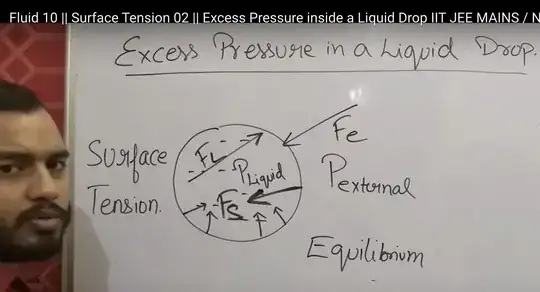When I was watching a Youtube video explaining why pressure inside a drop is greater than the pressure of the air outside, surface tension was drawn as acting radially inwards from the spherical surface of the liquid drop. Hence, because there is both the force due to the air pressure acting over the surface area of the drop and the surface tension of the drop acting inwards, for the drop to be at equilibrium (i.e. not contracting or expanding), the pressure of the liquid in the drop has to be greater than the pressure of the air. I have taken a screenshot of the video: https://www.youtube.com/watch?v=Us7sk1OrcUc&t=225s (at 3:45) to show this. This explanation was very intuitive to me. However, the explanation uses the fact that surface tension acts perpendicular to the surface of the liquid (and hence the force due to surface tension is radially inwards), whereas my NCERT Textbook said that surface tension acts parallel to the interface. This is confusing me, and I can't understand which is true: does the surface tension act parallel to the surface (if so, why is pressure inside a liquid drop greater than the air pressure outside) or does the surface tension act perpendicular to the surface (if so, why does my textbook and so many other sources say that it acts parallel to the surface of the liquid)? Thanks.

Asked
Active
Viewed 206 times
0
Meripadhai
- 383